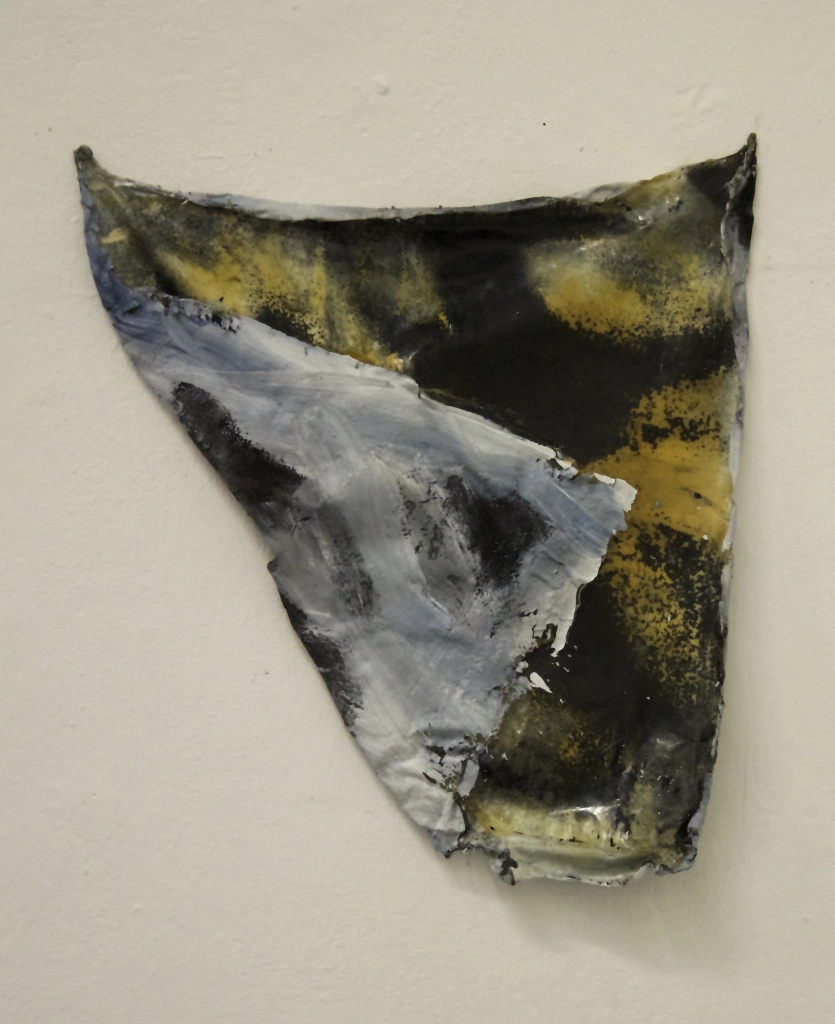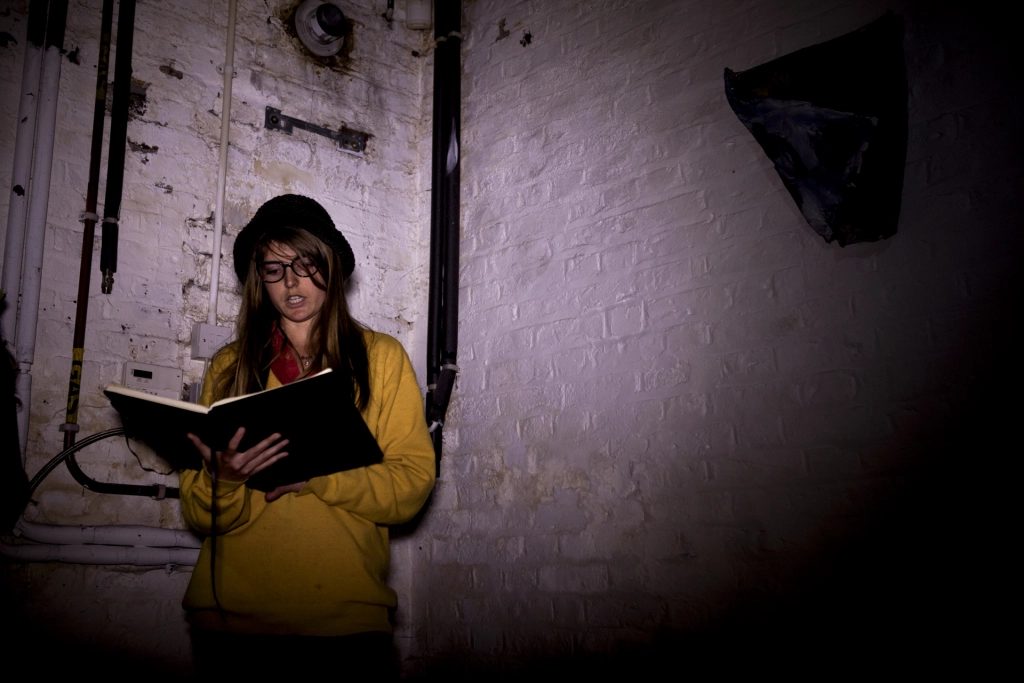Laura Silva: 'Change and Embodiment'
This text was written as part of The Still Point’s ‘Creative Exchange’ which paired artists, from the Slade, with PhD researchers, from UCL and King’s College London, for an exhibition of visual art work and live readings at FAT RELIC. More details can be found on the blog and photographs from the evening are on our Facebook page.

The defiance in Dala’s work, of conventional conceptions of painting, is clear. The inherently altering nature of her work is perhaps not so. Working with liquid latex, resin and pigments, her materials interact both with each other and with the external environment, namely oxygen, to change form and appearance over time. Her work therefore offers the viewer temporally distinct experiences. The experience her work elicits has an added dimension as it is not only the viewer’s subjective temporality that contributes to her aesthetic experience, here the painting itself has a lifespan, a contingent yet fluid development.
My work involves the attempt to add an emotional dimension to theoretical reasoning, a defiance against the false dichotomy between reason and emotion, against most concepts of ‘pure reason’. Science is often thought as a paradigm case of theoretical reasoning. Scientific inquiry is as temporally dependent as Dala’s art works. Changing conceptual paradigms alter how we observe the objects of our inquiry. Time allows the evolution of a completely distinct artwork within the same spatial boundaries. In science, temporal distinction underpins different experiences of the same natural world.
Human sciences, as opposed to experimental sciences, are meant to be characterized by reflexivity, here meaning that the object of study is also the subject conducting the study itself. I am sceptical of how helpful the notion of reflexivity can be in distinguishing human from empirical sciences. Once the nature of our inquiry is accepted as inherently embodied, socially and biologically, room for the powerful role of emotions in abstract thinking, begins to be made.
The products of Dala’s process are pieces that possess intricate physicality. We long to explore her work tactually. This desire is triggered by our emotional responses to the work as emotions are the seat of motivation and preparation for action. The embodied nature of the subject is therefore crucial to the aesthetic experience elicited by the artwork. I take a similar experience to be involved in instances where scientists undergo aesthetic experiences regarding scientific theories or theorems. This experience is inherently emotional, embodied and physical. Detached appreciation is therefore a possibly gendered anachronism or false dogma.
We need to take seriously the question of what role such aesthetic experiences can play in scientific inquiry. This aesthetic, emotional experience motivates the generation of both action and beliefs. Allowing beliefs based on emotions to prove relevant in abstract thinking, as opposed to being vestigial epiphenomena. There is a rationality to emotions that cannot be detached from our nature as embodied, biological beings. Emotions are a way of perceiving, that is crucial to both art and science.

Laura Silva is in the first year of her PhD at UCL, her research explores the philosophy of emotion. Dala Nasser is currently undergoing her undergraduate studies at UCL’s Slade School of Fine Arts.
The texts from our Creative Exchange will continue to be published on the blog over the coming months.
